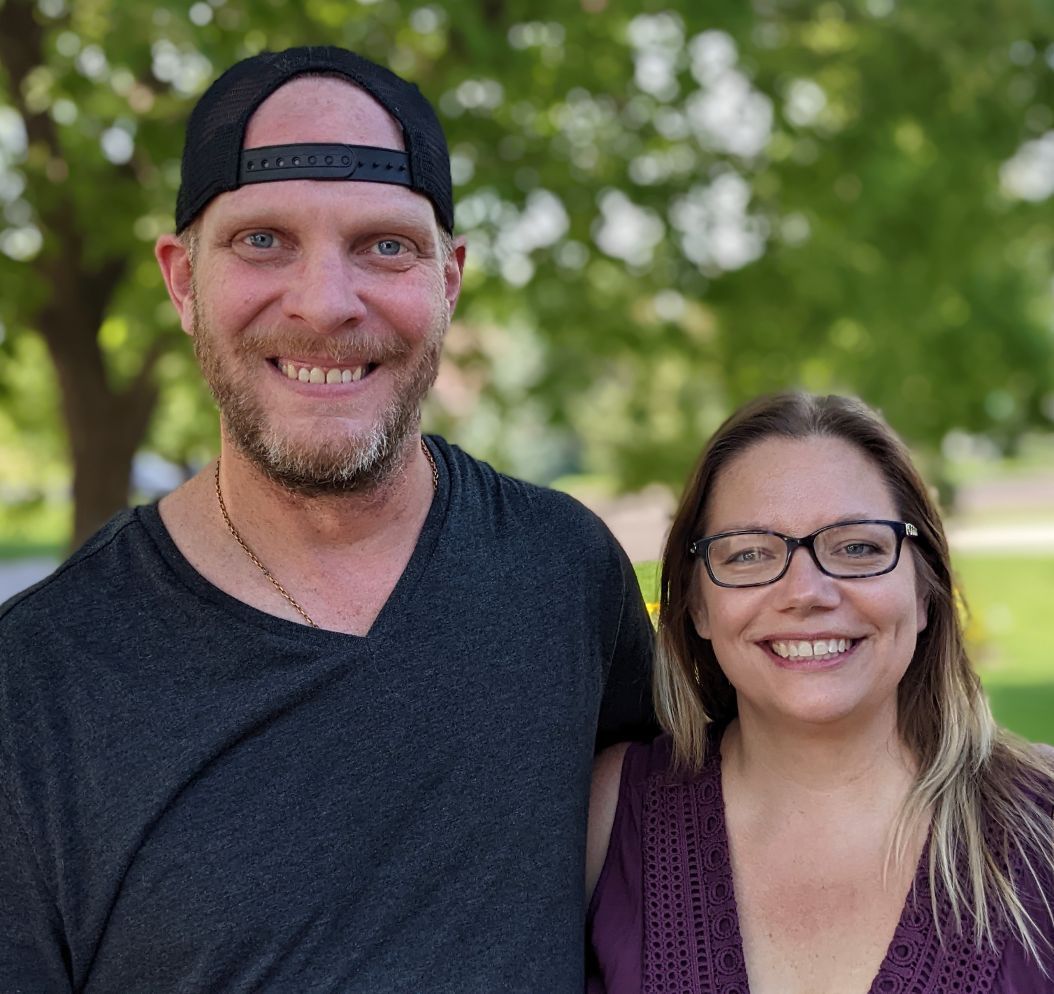We're launching our series on veteran suicide prevention with a deeply personal story
This week we tell you why we're focused on veteran suicides, next we'll explore solutions.
Wanna some chocolate?

We're so proud to launch our series on veteran suicide and solutions
You may have heard someone from The Optimist talking about our series on veteran suicide prevention. We've been planning the project for several months.
Freelance reporter Janelle Bradley conceived of the project and has put her heart and her mind into it. This week we hear directly from Janelle about why this issue is so important to her.
Suicide is the leading preventable cause of death in the U.S. And this week is National Suicide Prevention Week.
Our project features the unique risks and circumstances that impact veterans. It will still be useful and insightful for those worried about suicide in other populations.
Perhaps you're worried this project could be too heartbreaking to read. Please give it a chance. To make positive changes we have to face the challenge and explore possible solutions.
If you yourself are struggling, please reach out for help. You can find support by dialing 9-8-8.
Each newsletter this month will explore practices that can help prevent suicides among veterans. These are parts of the solution.
This week Janelle shares some of her story. Next Wednesday you'll get a newsletter about broaching a conversation on suicide. In two weeks we'll explore the importance of connection. And we'll end the series with a story centered on firearm safety.
Oh yeah, we also have a comic strip coming.
As a reader, you're already part of the solution. Thanks for joining us!

Aaron and Janelle Bradley pose with their puppy Beau on Friday, Sept. 2, 2022, at their Albertville, Minn., home, where they raise their two children. (Courtesy of Jen Moeller)
I lost a veteran to suicide, so I went on a search for preventions that work
By Janelle Bradley for The Optimist
This column includes descriptions of suicides. If you are in crisis or helping someone in crisis, the Suicide and Crisis Lifeline has certified listeners on call: 9-8-8.
I never imagined how much veteran mental health and the issue of veteran suicide would profoundly impact my life when I met my husband Aaron in 2017.
A Marine Corps veteran, Aaron served in combat in Iraq shortly after 9/11 and in 2017 began using the mental health resources the VA provides. He successfully completed an inpatient stay to work through his combat trauma and continued seeing VA mental health professionals for a few months in outpatient care. I often went to the VA medical center with him when he had appointments, partially because the food at the VA is a guilty pleasure, but also because I wanted to support him. When we met and he first shared some of his traumas from combat, I came to the realization that I would never be able to understand what he’d been through, but I made the commitment to always validate it and never let him feel alone.
It was at the VA in Minneapolis, while waiting for Aaron, when I first felt the loss of a veteran. One of my favorite things to do at the VA is observe. It’s a huge place that is always teeming with doctors, caregivers and veterans. I am one of those people who likes to think about people’s stories: who they are and what they do. Most notable to me were the elderly women who, like me, committed to never letting their veteran feel alone. I could see myself in them.
I remember taking in all of the action around me before settling in with a newspaper. I came across a news article about a veteran named Justin Miller. Justin, also a Marine Corps veteran who served in Iraq, went to the Minneapolis VA Health Care System hospital in February 2018 because he was in the darkest place imaginable. After spending four days in the mental health unit, Justin was released only to walk out to the parking lot and take his own life in his truck. His body was found. He killed himself at the place where he was seeking help. My heart absolutely broke for his family in that moment as I tried to put myself in their place.
That story stuck with me for a long time. How could he have just walked out after seeking the help he was desperate for?
My second experience with veteran suicide was a much more life changing event that magnified the questions I had about Justin Miller.
In 2017 I met an Air Force veteran, Chris, who served for over a decade and had deployments in the Middle East after 9/11. I remember the first time I met Chris. He was an acquaintance of my husband, and we had stopped by his house to pick up outdoor furniture he was selling. He was quiet and looked so, so sad.
When Aaron and I left I couldn’t shake the feeling that Chris was someone who was hurting inside. I asked Aaron, “Do you think he’s OK?” He didn’t. Chris had been going through a lot with divorce, substance use, leaving the Air Force. Over the next week I couldn’t stop thinking about Chris, so I asked my husband for his phone number and I texted him. It was probably the most awkward thing I’ve ever done, but I can say with absolute truth that I’ve never been pulled that hard to do something like that. I simply texted him, “Hey, this is Janelle. I know this is weird, but I’ve been thinking about you this week and I just kind of need to know you’re OK.” That was the first time I texted asking if he was OK – but certainly not the last.
Over the next three years, Chris became a bit like a brother to me. When he needed help, I was there. When he was thinking thoughts about suicide or violence, I was there. When he was obsessing over a conspiracy theory, I was there. When he married a woman from Tinder and needed a witness, against my better judgment, I was there. When he left said wife, I was there.
He shared a few Christmases and a few Thanksgivings with our family and slowly became more comfortable with us. Chris shared some of his experiences and traumas with me, which made it a little easier for me to understand the “why” behind Chris’s depression and substance abuse. Over those three years, I watched as he went in and out of the mental health unit at the VA hospital, and at times I truly thought things were going better for him.
By the end of January 2020, Chris had again successfully completed a mental health stay at the VA hospital and was hopeful that he would be able to see his young son, whom he lost visitation rights to two years prior. But in late February 2020 things started to change for Chris. He was anxious and all of the bad news coming at that time – COVID-19, politics, the state of the United States – was difficult for him to process and manage. Fortunately, he was able to get himself back to the hospital, where he stayed for three weeks until he decided to move to a more long-term facility in Iowa.
Between the VA and the facility in Iowa, he needed a place where he could quarantine. It was during the very beginning of the pandemic, when Covid was just getting to Minnesota and knowing that he had no family anywhere nearby, we offered him a place to stay. What I remember about that time is thinking that Chris seemed to be doing really well. His eyes looked less burdened, and he seemed happier. I remember thinking that the stay at the VA had done him a lot of good, and I was excited that he’d made the decision to continue with his recovery.
Chris arrived at our home on a Monday evening. Things were going well and I recall the last conversation we had about getting his things from his apartment to a storage unit. He was a little agitated because he wanted to get it done immediately and I told him, “I promise you, tomorrow we’ll get it all worked out. Get some rest tonight. It will be OK.”
The next day he wasn’t responding to texts or answering to knocks on his locked door. Initially I wanted to give him his space, but eventually the feeling of dread I’d had for a few hours made me call the police for a welfare check. Chris had cut his wrists sometime earlier that day. He didn’t leave a note and his phone was never found.
The National Suicide Prevention Lifeline changed from a 10-digit number to 9-8-8 in July 2022. The Lifeline’s toll-free number connects the caller to a certified crisis center near where the call is placed.
Chris’s final crisis will impact me and my family forever. I still find my emotions drifting between guilt, anger, sadness and desperation for answers I’ll never get. His suicide has also made me more vigilant within my own home and in my community.
I live with a veteran with PTSD. And I’ve found that, despite the resources, many veterans don’t understand exactly what PTSD is or how reaching out can help. According to the organization Stop Soldier Suicide, veterans of the United States military are 50% more likely to die by suicide than their peers who have not served.
Statistics released in the 2021 VA National Veteran Suicide Prevention Annual Report reveal an average of 17 veterans died by suicide every single day in 2019. In July 2022, my husband’s battalion had officially lost more Marines to suicide since deployment than they lost during their weeks-long battle in Fallujah, Iraq.
Forty percent of veterans admit that the most difficult thing for them is the transition from combat to civilian life, according to a report from Stop Soldier Suicide. In some ways, that sounds like an easy fix. A closer look shows that veteran suicide as a whole is a complex issue without any one answer.

Aaron and Janelle Bradley pose on Friday, Sept. 2, 2022, at their Albertville, Minn., home, where they raise their two children. (Courtesy of Jen Moeller)
With my background in journalism, I was thrilled for the opportunity to write for The Optimist and immediately pitched the idea of a series on veteran suicide. I wanted to explore the dynamics behind the issues veterans face when they return from war. My goal was to answer the questions: What kinds of programs are currently in place? What is working? How can it be better? Who is at the helm, and how can you help?
My hope is that over the next few weeks you will also be inspired in a way that moves you to action. That you will be able to provide even the smallest assistance to a veteran in crisis, whether it is a personal acquaintance or someone you just happen to meet at the right time.
*The Optimist has excluded Chris’ last name because his family could not be reached to weigh in on privacy concerns. Justin Miller’s last name was included because his death has been widely publicized and discussed.

The Optimist's tree icons
Thank you for staying with us to the end
Next week's edition will feature the first step in a suicide intervention.
Find us on social media for previews and insights on our reporting.
Follow us on InstagramPlease share your thoughts on the series: nora@theoptimist.mn.
Take care,
♥ Nora
Our mailing address:
P.O. Box 298
St. Michael, Minnesota 55376
Copyright © 2022 Chocolate Fashion, All rights reserved.


